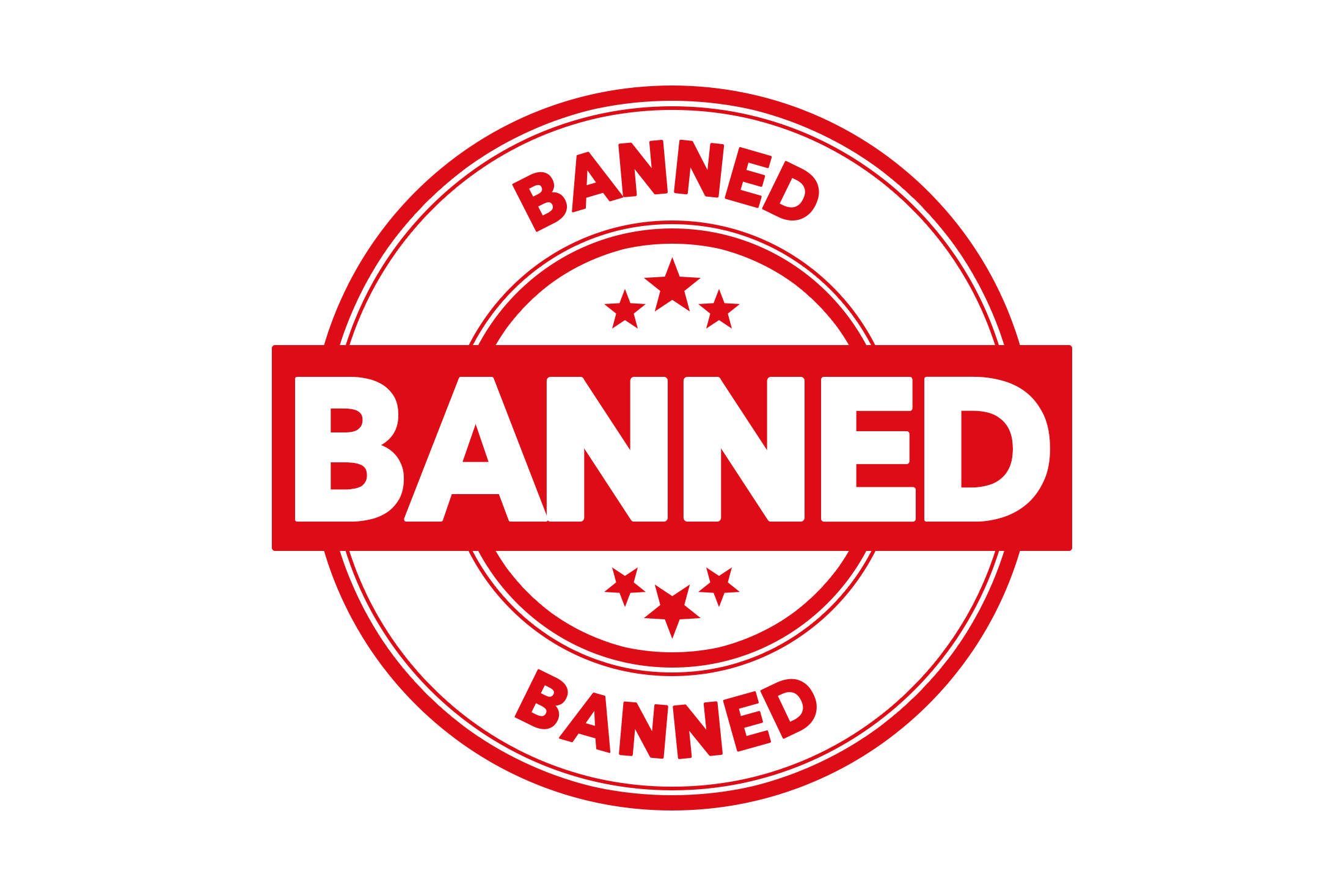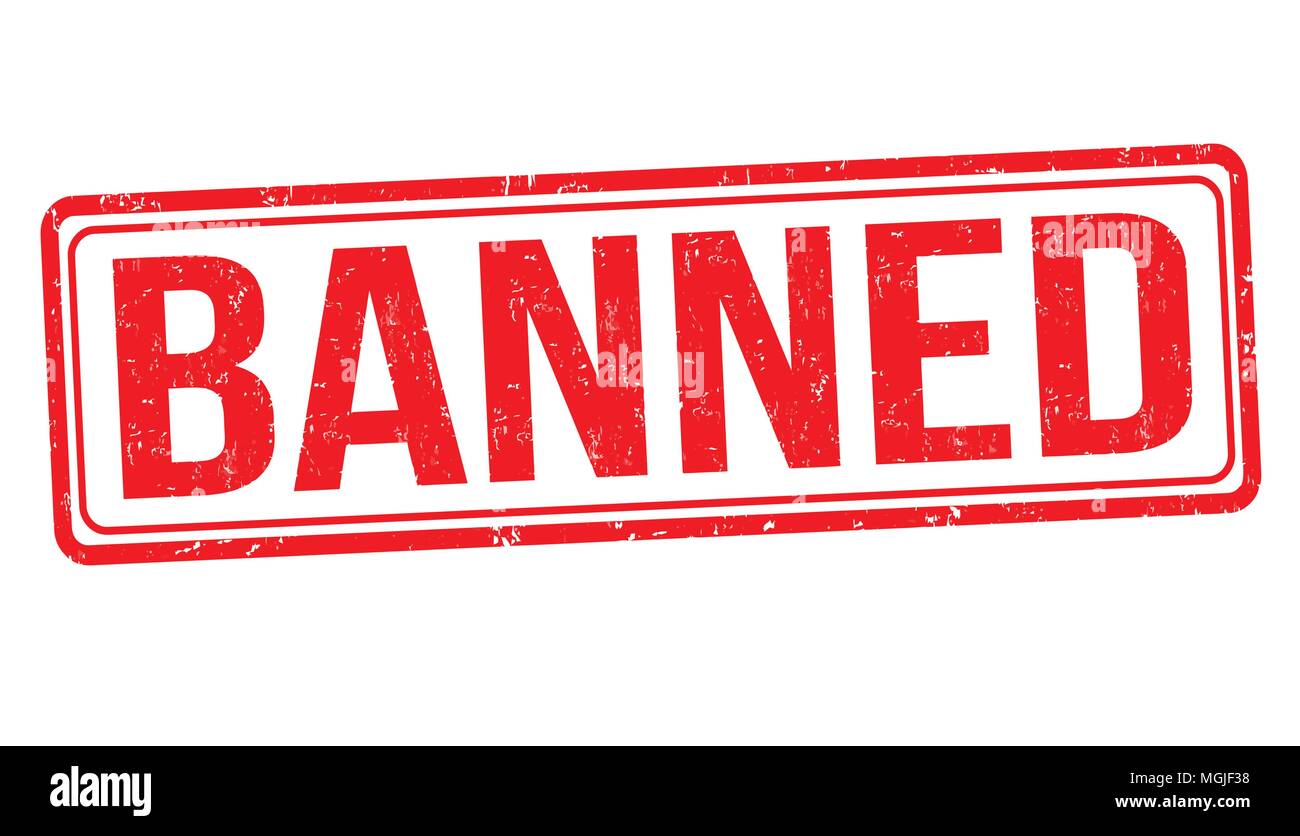Banned Snaps - What It Means When Something Is Restricted
Table of Contents
- What Does It Mean to Put a Stop to Something?
- Why Do Things Get Labeled as Banned Snaps?
- The Ripple Effect of Banned Snaps
- How Do We Deal with Banned Snaps?
- When a Rule Is Set for Something
- Can Banned Snaps Ever Be Allowed Again?
- The Impact on Creators and Their Banned Snaps
- Public Feelings About Banned Snaps
Have you ever stopped to think about what it truly means when something gets a "no-go" sign, especially in our quick-moving world where pictures and short messages fly around? We often hear about things being put on a list where they are not allowed, or perhaps a person can't join a group anymore. This idea of something being off-limits, whether it is a specific type of picture, a certain action, or even a way of meeting up, has a lot of layers to it, as a matter of fact. It touches on rules, what is considered okay, and how societies decide what can and cannot be shared or done.
- Turk Ifsa Blog Sotwe
- Nevada Las Vegas Craigslist
- Crustal Couture Dress To Impress
- Who Is Lauren Hamden
- Digital Pron
When we talk about "banned snaps," we are really exploring the core idea of prohibition – that is, making something not permitted, typically through official channels. This could involve stopping the display of a piece of art, preventing the sharing of certain kinds of images, or even keeping someone from taking part in an event. It is a way for groups or official bodies to control what is seen, heard, or done within their boundaries, and you know, it happens more often than you might think. This concept of restriction shapes how we interact with information and with each other, in a way.
The very act of putting a stop to something, or declaring it out of bounds, tells a story about what a community values and what it seeks to protect. It is about drawing lines and saying, "this far, no further." Understanding these lines, especially when it comes to quick bits of content like "snaps," helps us grasp the bigger picture of how rules are made and what happens when those rules are put into effect. We will look at what it means for something to be labeled as "banned," and also what the bigger picture implications are for things like "banned snaps."
What Does It Mean to Put a Stop to Something?
When something is "banned," it basically means it has been declared off-limits. This declaration usually comes from an official source, like a government body, a club, or a group setting the rules. It is not just a suggestion; it is a clear statement that something is illegal or simply not permitted. For example, a certain kind of behavior might be stopped by official rules, meaning you are not allowed to do it. Or, a specific item might be made unavailable for people to buy or use. This act of making something unavailable or illegal is a pretty serious step, and it has a wide reach.
- Destiny 2 Bot Checkpoint
- Alina Habba Sexy
- Mythbusters Cast
- Peachykai Mom
- Crystal Couture Dress Toimpress
Think about it this way: to put a stop to something means to make it so that its use, its showing, or its sharing is simply not an option. This can apply to many different things. For instance, a book might be taken off shelves, or a particular type of showing might not be allowed to happen in public. The purpose is to keep certain things from being present or from spreading around. This can happen in many different contexts, from a small community group deciding what is okay to share, to large government bodies making decisions about what can be brought into a country. It is a way of setting boundaries, so.
Sometimes, a ban is about refusing to let a person take part in something or go to a certain place. A coach, for instance, might be told they cannot be on the side of the playing field for a couple of games. Or, a person who likes to bet might be told they cannot come into a certain club anymore. In these cases, the ban is about stopping someone from being involved or from being in a particular spot. It is a way of controlling access, you know, and it shows that there are consequences for actions that go against established guidelines. This idea of being told you cannot do something or be somewhere is a very direct form of restriction.
Why Do Things Get Labeled as Banned Snaps?
The reasons behind something getting the label of "banned snaps" can be quite varied, honestly. Often, it comes down to protecting certain values or preventing harm. For example, some content might be seen as inappropriate for young people, or it might promote ideas that a society deems harmful. In other situations, the prohibition might be about keeping things fair, like when rules are changed in a game to stop certain strategies from being too powerful. It is about keeping things balanced and safe, you see.
Consider the idea of changes to a list of things that are not allowed or have limits. This happens often in various fields. For example, in the world of games, certain cards or items might be put on a list where they are not allowed to be used in official competitions. This is done to keep the game fair and fun for everyone, ensuring that no single strategy becomes too strong. These kinds of adjustments are made to keep the environment healthy and competitive. So, when we talk about "banned snaps," it could relate to content that disrupts a perceived balance or fairness.
Another reason for something being put on a forbidden list is when it goes against what is considered acceptable or legal. For instance, some types of images or messages might be considered against the law due to their nature. Or, certain methods in farming, like using specific chemicals, might be stopped because they are seen as bad for the environment or for people's well-being. When these chemicals are put on a forbidden list, it often means that farmers have to find other ways to do their work, which can sometimes cost more money or take more effort. This shows that the reasons for "banned snaps" can sometimes have a very practical and economic impact.
The Ripple Effect of Banned Snaps
When something becomes a "banned snap," the effects can spread out in many directions, almost like ripples in a pond. It is not just about the item or action itself being stopped; it is also about what happens as a result. For example, if certain chemicals are no longer allowed in farming, farmers might have to spend a lot more time and money pulling weeds by hand. This is a direct outcome of the prohibition, and it shows how a rule can change daily work. This can, in turn, affect the price of goods, so it really does have a wide impact.
Sometimes, when creative works are put on a forbidden list and cannot be shown to the public, they can actually become more meaningful. They might turn into symbols of resistance or freedom of speech. People might talk about them more, precisely because they are not allowed to be seen easily. This is a bit of a curious outcome, as a matter of fact, where the act of stopping something from being shown makes it more powerful in a different way. It shows that the intention behind a ban does not always match the actual result, especially with "banned snaps" that carry a message.
The impact also extends to people's behavior. If someone is told they cannot go to a certain place, like a club, it changes where they can spend their time and who they can interact with. This can lead to feelings of being left out or isolated. Similarly, if a group is not officially allowed to meet or exist, it pushes their activities underground, which can make things more difficult and less transparent. These are all part of the widespread consequences when something is declared a "banned snap," affecting both individuals and broader communities.
How Do We Deal with Banned Snaps?
Dealing with "banned snaps" involves understanding the rules and finding ways to live within them, or sometimes, challenging them. For individuals, it means being aware of what is permitted and what is not, whether it is in a game, a social setting, or a legal framework. It requires a certain level of awareness to avoid problems. For instance, if you know a certain type of content is not allowed on a platform, you simply avoid posting it. This kind of self-regulation is pretty common, you know.
For those who make rules, dealing with these prohibitions means regularly looking at why something was put on a forbidden list in the first place. Is the reason still valid? Are there unintended consequences? This kind of review is important to make sure the rules are fair and helpful. For example, a list of forbidden items in a game might get updated regularly based on how players are actually playing. This shows a living, breathing system, not something set in stone. So, the approach to "banned snaps" is not always static.
And then there is the aspect of public discussion. When something is declared off-limits, it often sparks conversations about freedom, safety, and who gets to decide what is okay. These discussions can be a way for communities to figure out their collective values and to push for changes if they feel a rule is unfair or outdated. It is a way for people to have their say, you know. So, dealing with "banned snaps" is not just about following rules, but also about engaging in the bigger conversation around them.
When a Rule Is Set for Something
Setting a rule for something, especially when it means putting a stop to it, is a serious action. It means that an official body has made a clear statement that a certain thing must not be done, shown, or used. This is different from a suggestion or a guideline; it carries the weight of authority. When something is officially put on a forbidden list, it is not just an idea; it is a directive that people are expected to follow. This formal declaration is what gives the prohibition its power.
These rules are put in place for a variety of reasons, as we have talked about. They might be there to keep people safe, to maintain public order, or to uphold certain moral standards. For instance, rules against certain types of public display might be about keeping peace in a community. Or, rules about what can be distributed might be about protecting people from harmful information. The intent behind setting these rules is usually to create a more orderly or safer environment for everyone involved.
The act of setting a rule also implies a system of consequences if the rule is not followed. If something is declared off-limits, and someone goes ahead and uses or shares it anyway, there will likely be repercussions. This could mean fines, loss of privileges, or other forms of punishment. This system of enforcement is what makes a prohibition effective, ensuring that the rule is taken seriously by those it applies to. So, when a rule is set for "banned snaps," there is a clear expectation of compliance.
Can Banned Snaps Ever Be Allowed Again?
The question of whether "banned snaps" can ever be allowed again is a good one, and the answer is often yes, in a way. Rules are not always permanent. They can change over time as societies evolve, new information comes to light, or the reasons for the original prohibition no longer apply. For example, something that was once considered too shocking for public viewing might, years later, be accepted as a piece of art. This shows how public opinion and cultural norms can shift.
Sometimes, a review process is in place to look at existing prohibitions. This means that officials or groups might regularly check to see if something still needs to be on a forbidden list. They might gather feedback, look at new research, or simply re-evaluate the situation. If the reasons for the prohibition are no longer strong, or if new benefits are seen, then the item or action might be allowed once more. This is a common practice in many regulated areas, to be honest.
Consider how rules in games change. A card that was once too powerful and put on a forbidden list might be adjusted or re-released in a different form, making it usable again. This happens because the game developers want to keep the game fresh and enjoyable. Similarly, with "banned snaps," if the context changes or if the original concerns are addressed, there is always a chance for a re-evaluation and a potential return to being allowed. It is about adaptability and growth, you know.
The Impact on Creators and Their Banned Snaps
When something a creator has made, perhaps a collection of "snaps" or other works, gets put on a forbidden list, it can have a big effect on them. For artists, writers, or any kind of maker, their work is often a very personal expression. When that work is told it cannot be shown or shared, it can feel like a direct hit to their ability to communicate and connect with people. This can be quite disheartening for them, naturally.
It can also mean a loss of income or recognition. If a creator's work cannot be publicly displayed or sold, then they miss out on opportunities to earn money from their efforts. This can be especially hard for people who rely on their creative work for their livelihood. The ban might also limit their chances to become known for their skills, which can hold back their professional growth. It is a practical challenge, too.
However, sometimes, as we talked about, a prohibition can inadvertently give a creator's work a different kind of importance. If their "banned snaps" become symbols of protest or freedom, it might bring them a new kind of attention, even if it is not the kind they originally sought. This can be a mixed blessing, offering a platform but also highlighting the challenges they face. It is a complex situation, really, with different outcomes for different creators.
Public Feelings About Banned Snaps
Public feelings about "banned snaps" can be quite varied, honestly. Some people might completely agree with the decision to put something on a forbidden list, feeling that it protects important values or keeps harmful content from spreading. They might see it as a necessary step for the well-being of the community. This group typically supports the rules as they are set.
On the other hand, many people might feel strongly against such prohibitions. They might see it as an attack on freedom of expression or a way of controlling what people are allowed to see and think. This group might argue that individuals should be able to make their own choices about what they consume, and that bans can stifle creativity and open discussion. This perspective often leads to calls for more openness.
And then there are those who fall somewhere in the middle, or who have very specific opinions depending on what exactly is being discussed. They might agree with some prohibitions but disagree with others, or they might feel that the rules need to be applied in a more thoughtful way. These differing public feelings show that the idea of "banned snaps" is not simple; it is a topic with many different viewpoints and often sparks a lot of discussion.
This article has explored the meaning of something being put on a forbidden list, drawing from various ways this idea is expressed, such as prohibiting by official rules, stopping the use or sharing of items, or preventing someone from taking part. We looked at why things might be declared off-limits, including changes to official lists, concerns about cost factors in production, or works becoming symbols when public exhibition is stopped. We also discussed how people are refused permission to do things, go places, or participate. The piece considered how something is officially stated as not allowed to be done, shown, or used, and the broader idea of things not being officially permitted to exist or meet. Finally, we touched on the impact these restrictions have on creators and public opinion.
- Goonies Cast Members That Have Died
- What Is Crystal Couture In Dress To Impress
- Heather Graham Actress
- Sotwe If%C5%9Fa Turk
- Is J Balvin Married

Ban PNG Transparent Images

Ban PNG Transparent Images

Banned forbidden illegal Stock Vector Images - Alamy